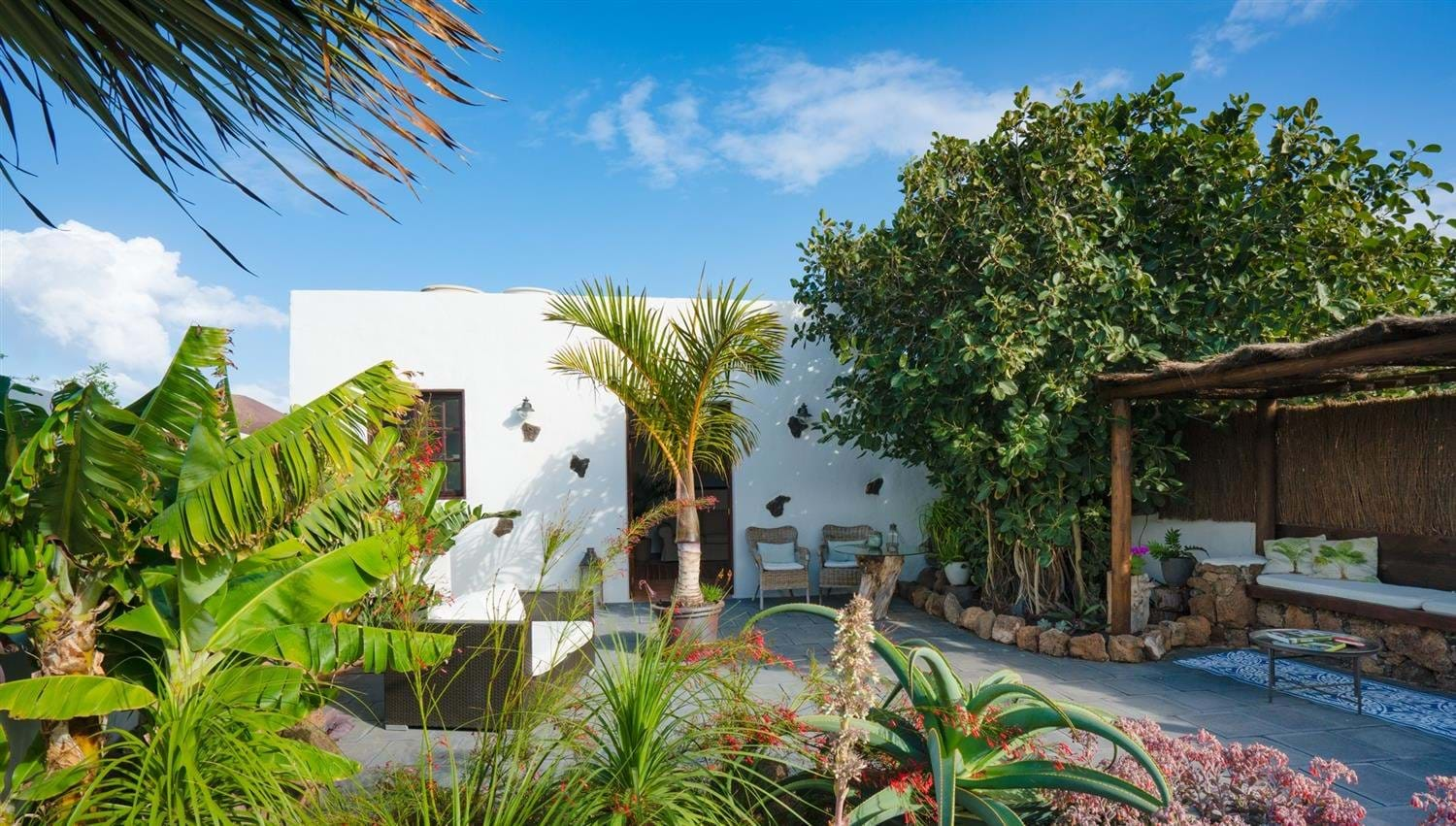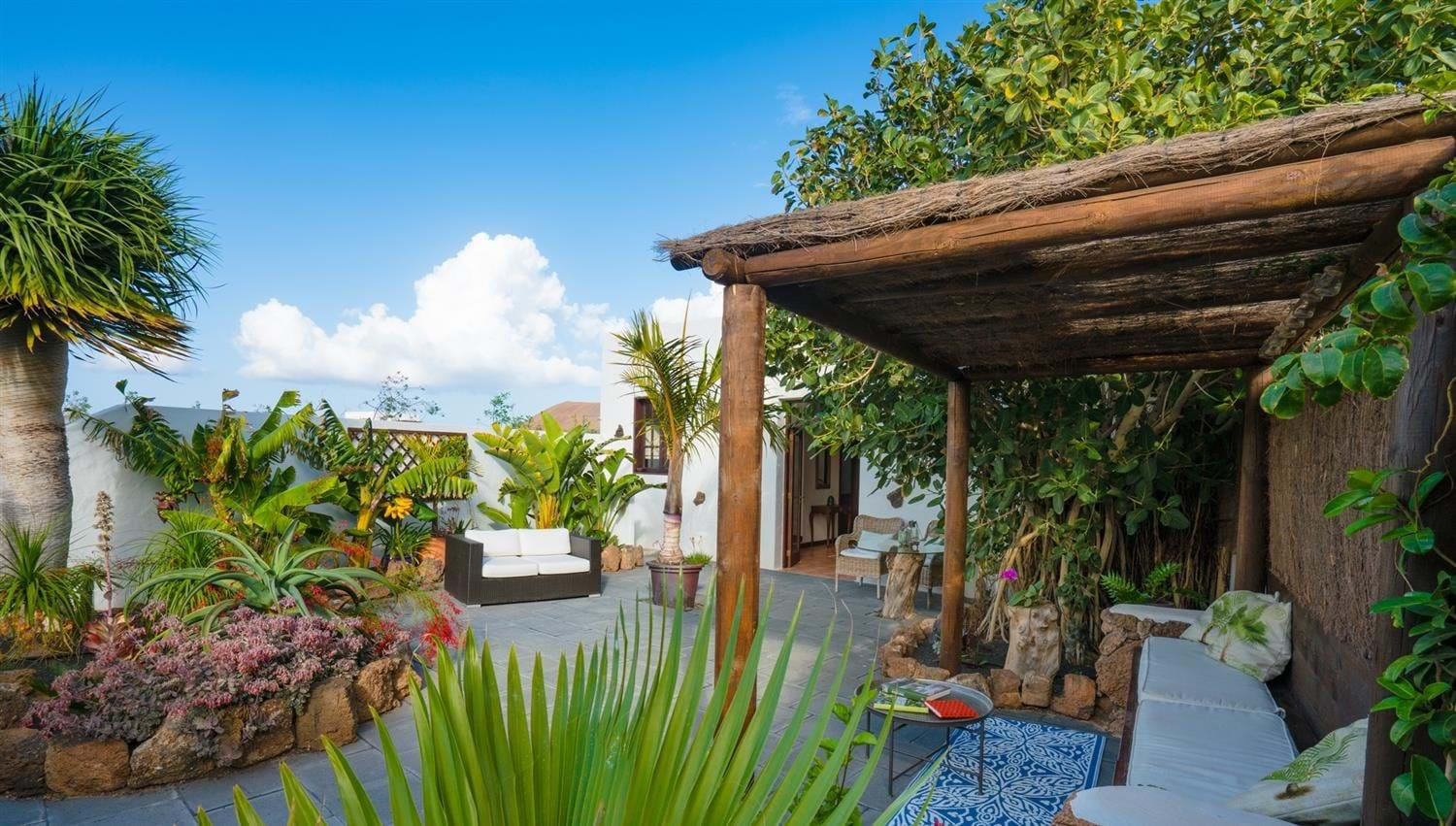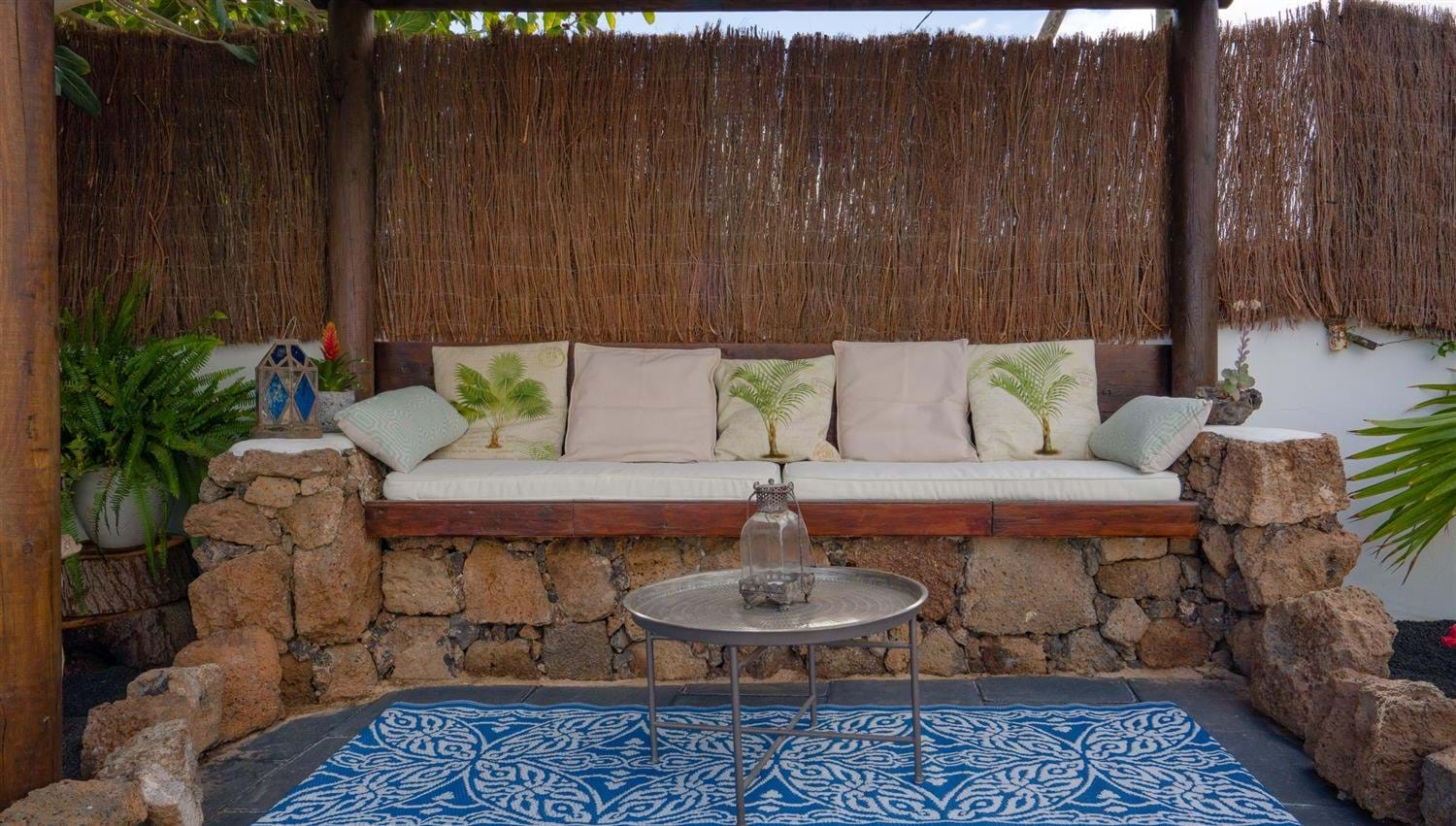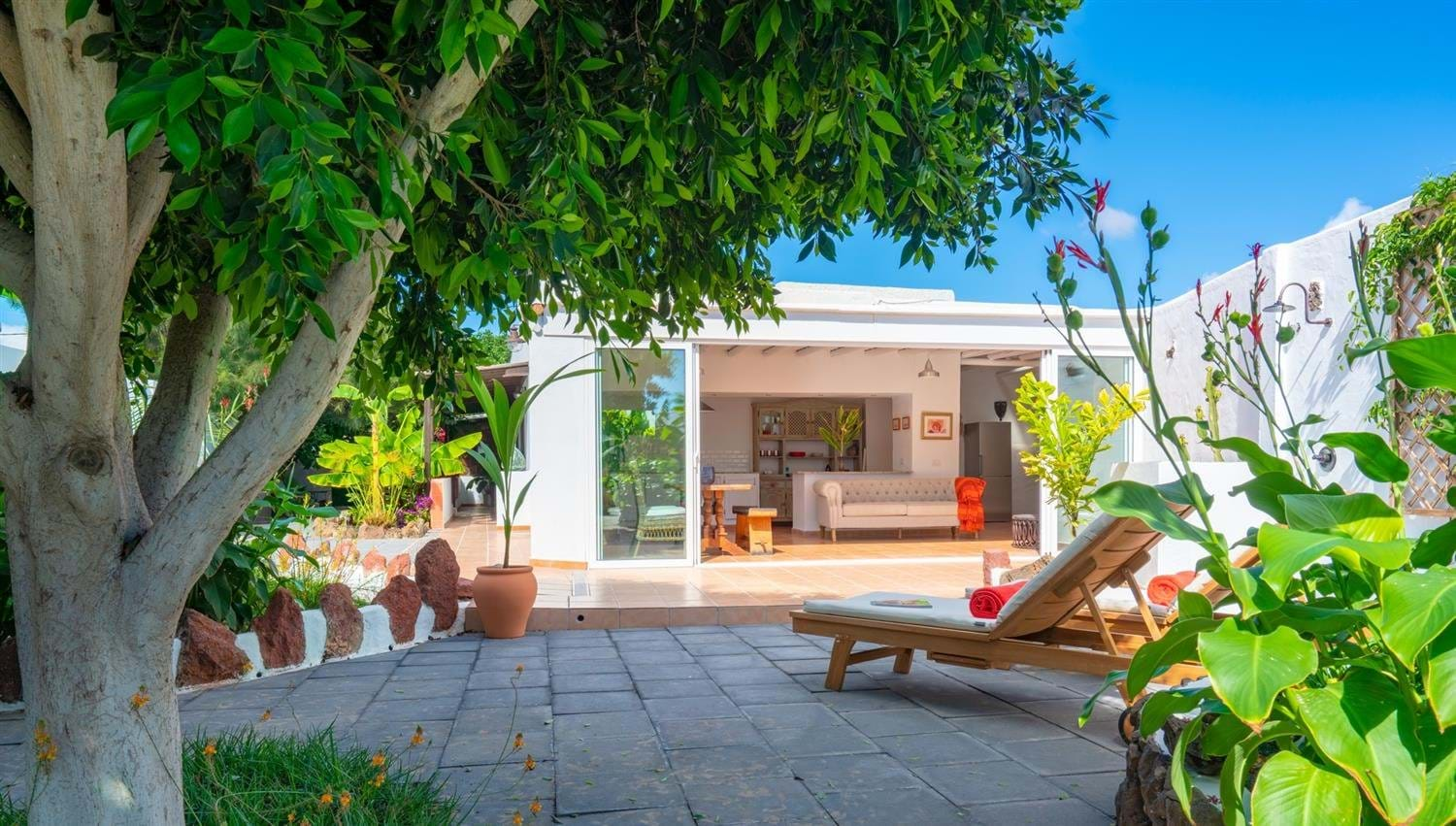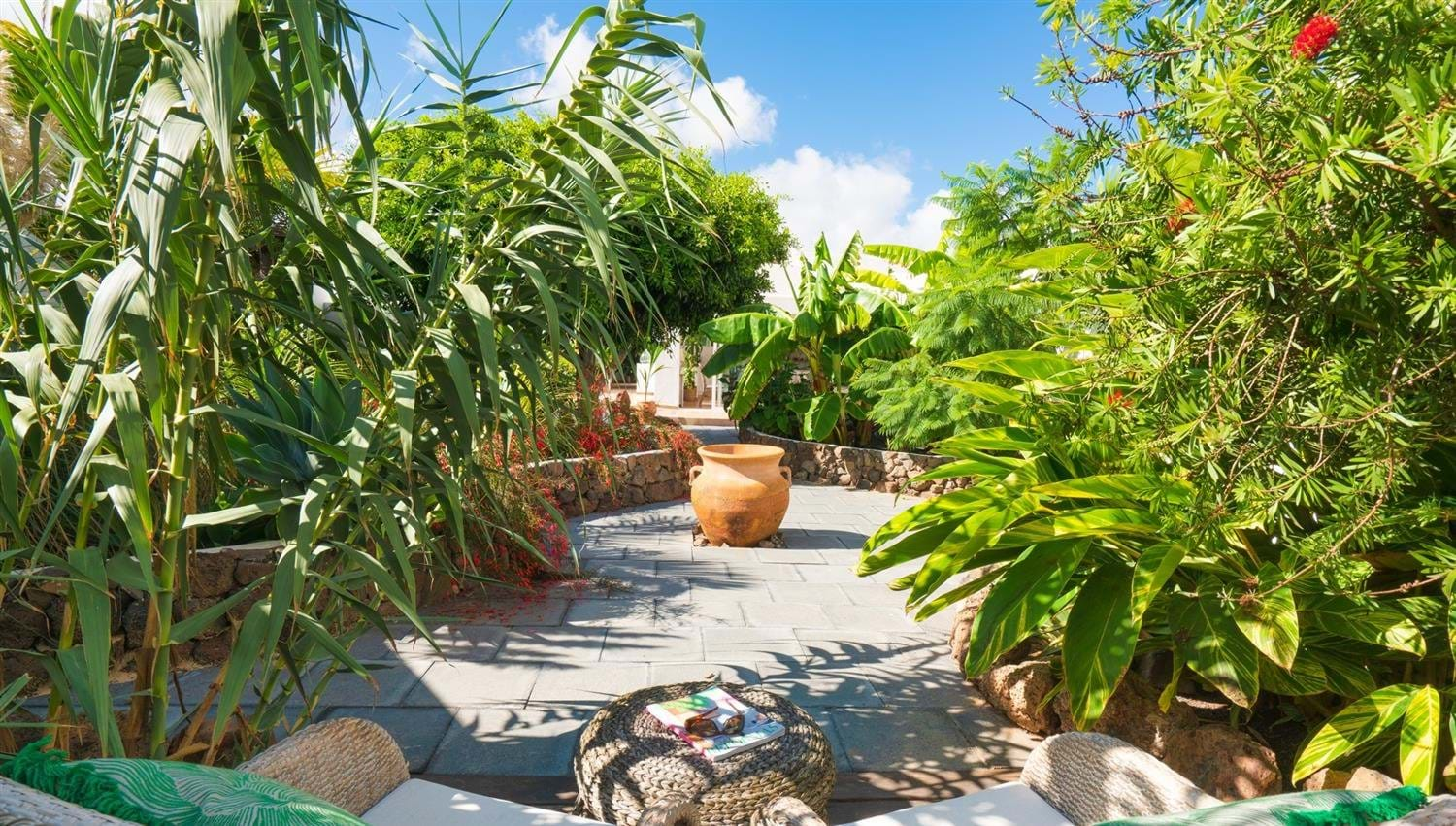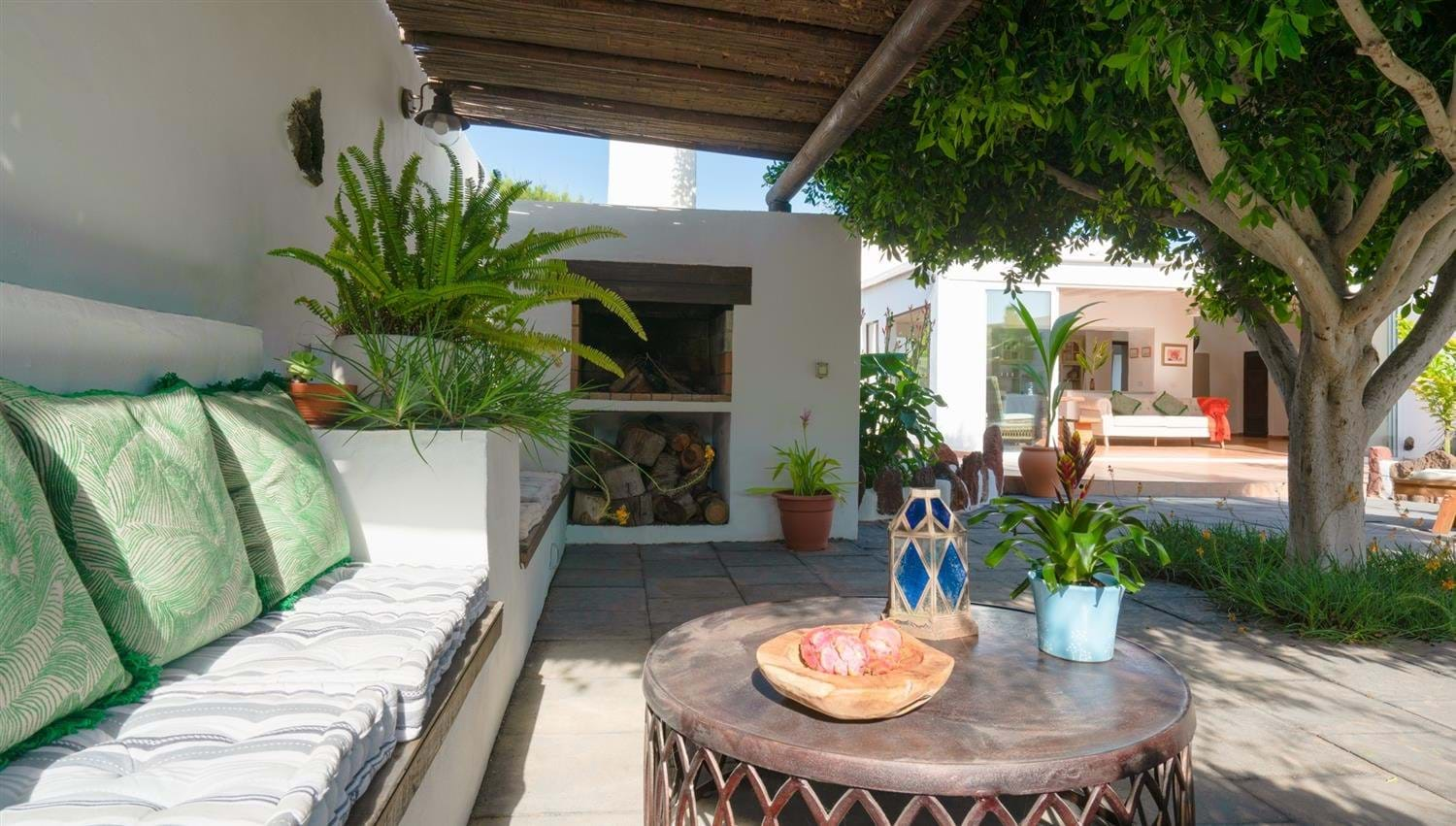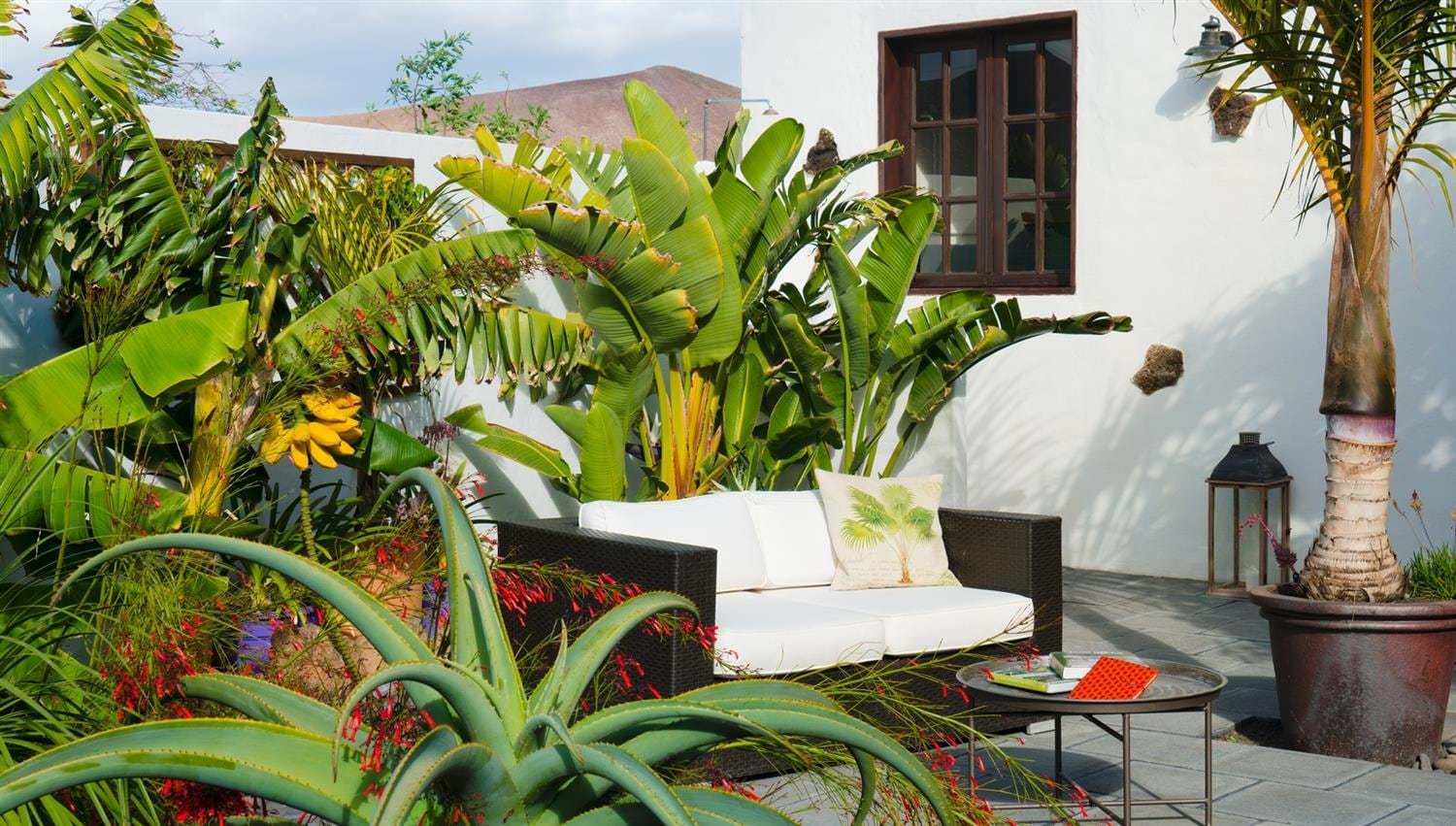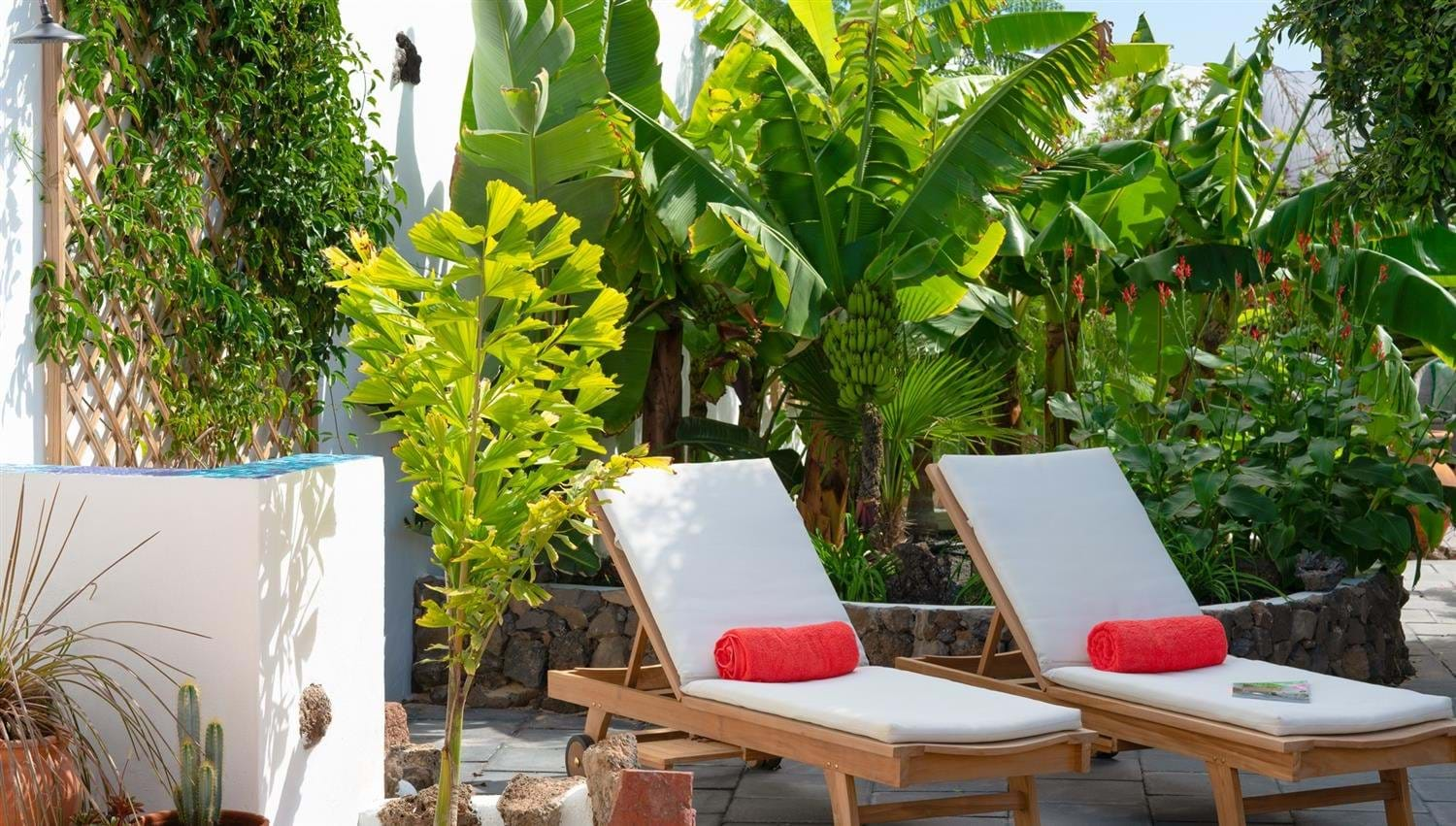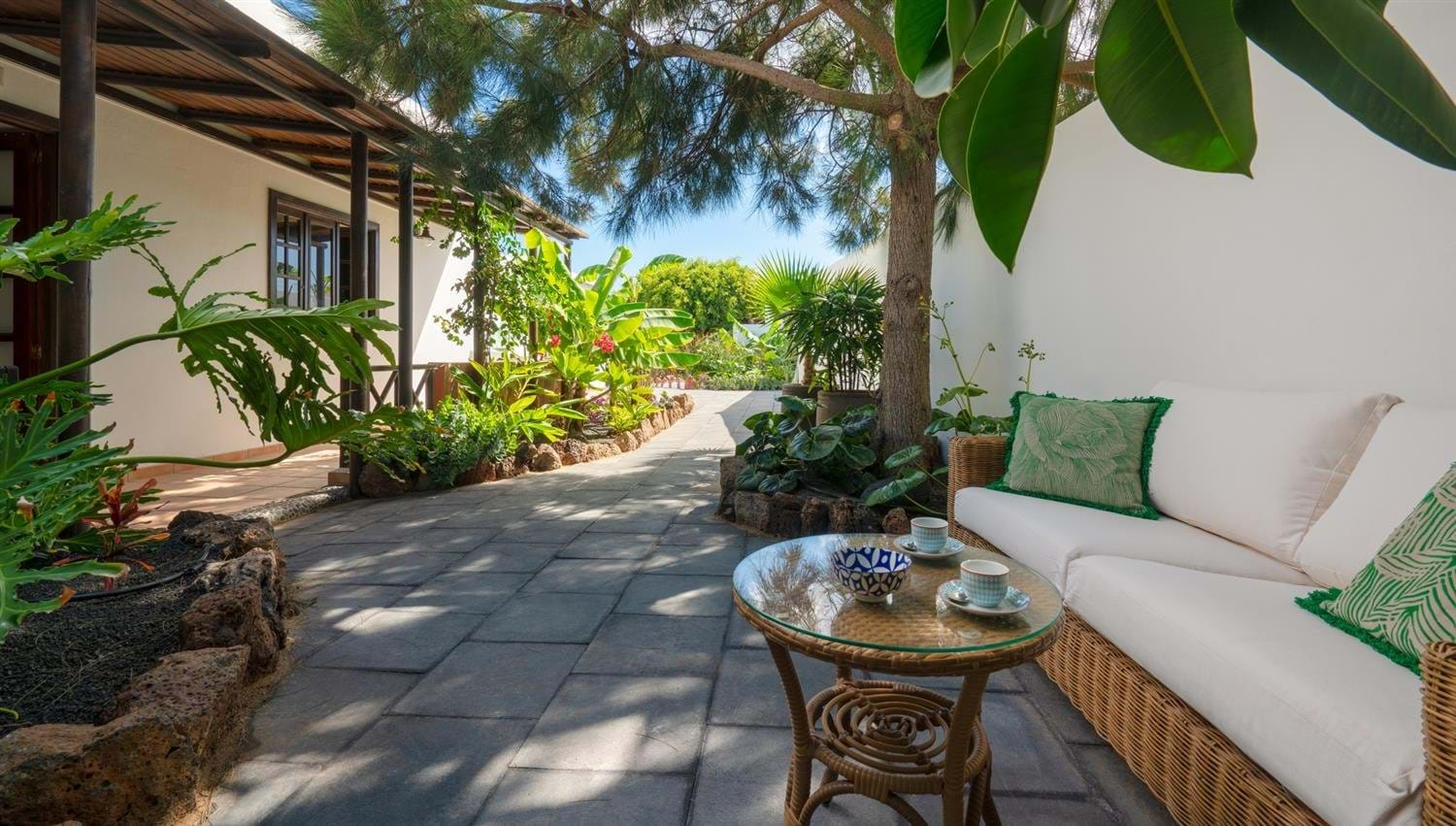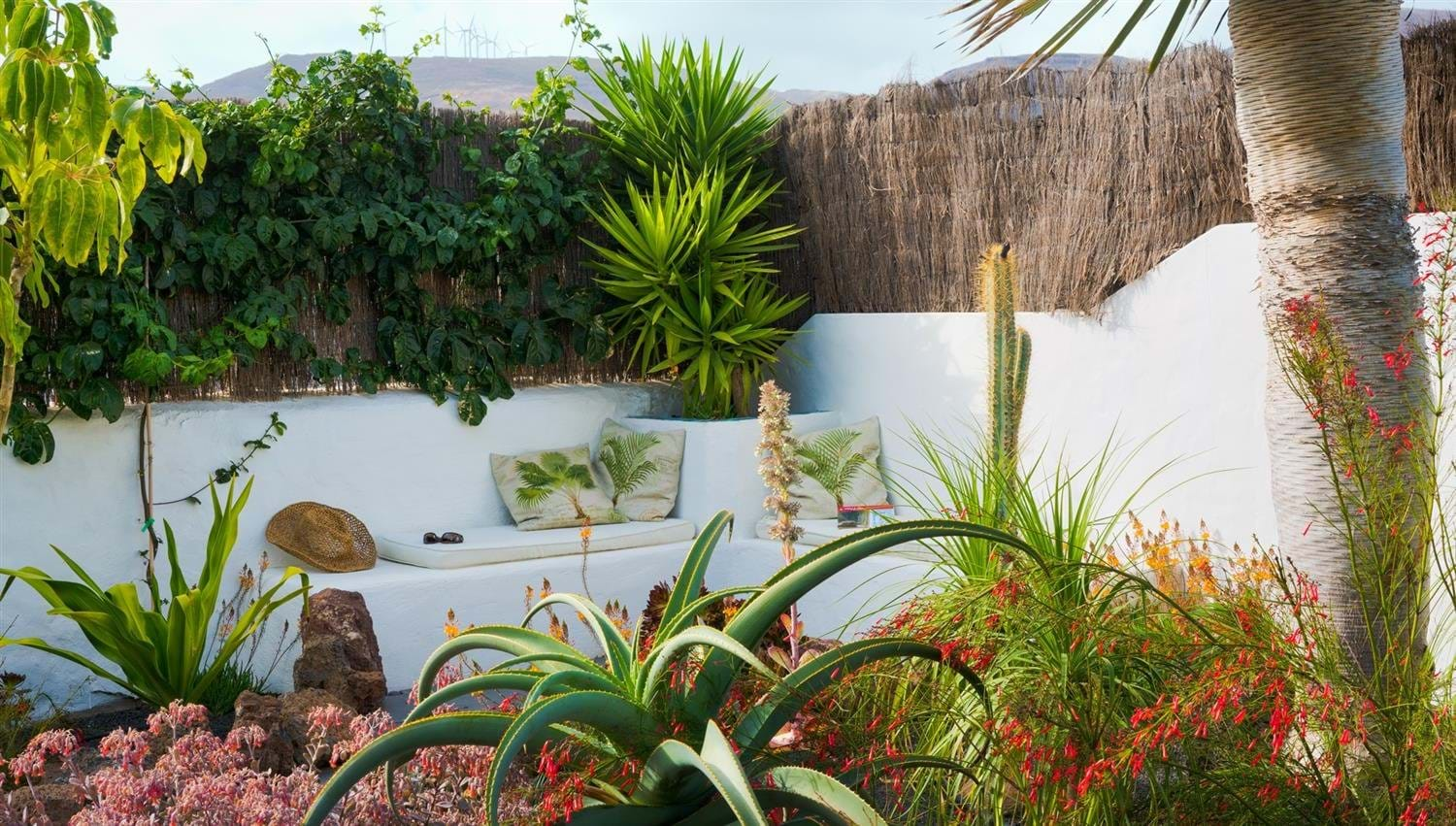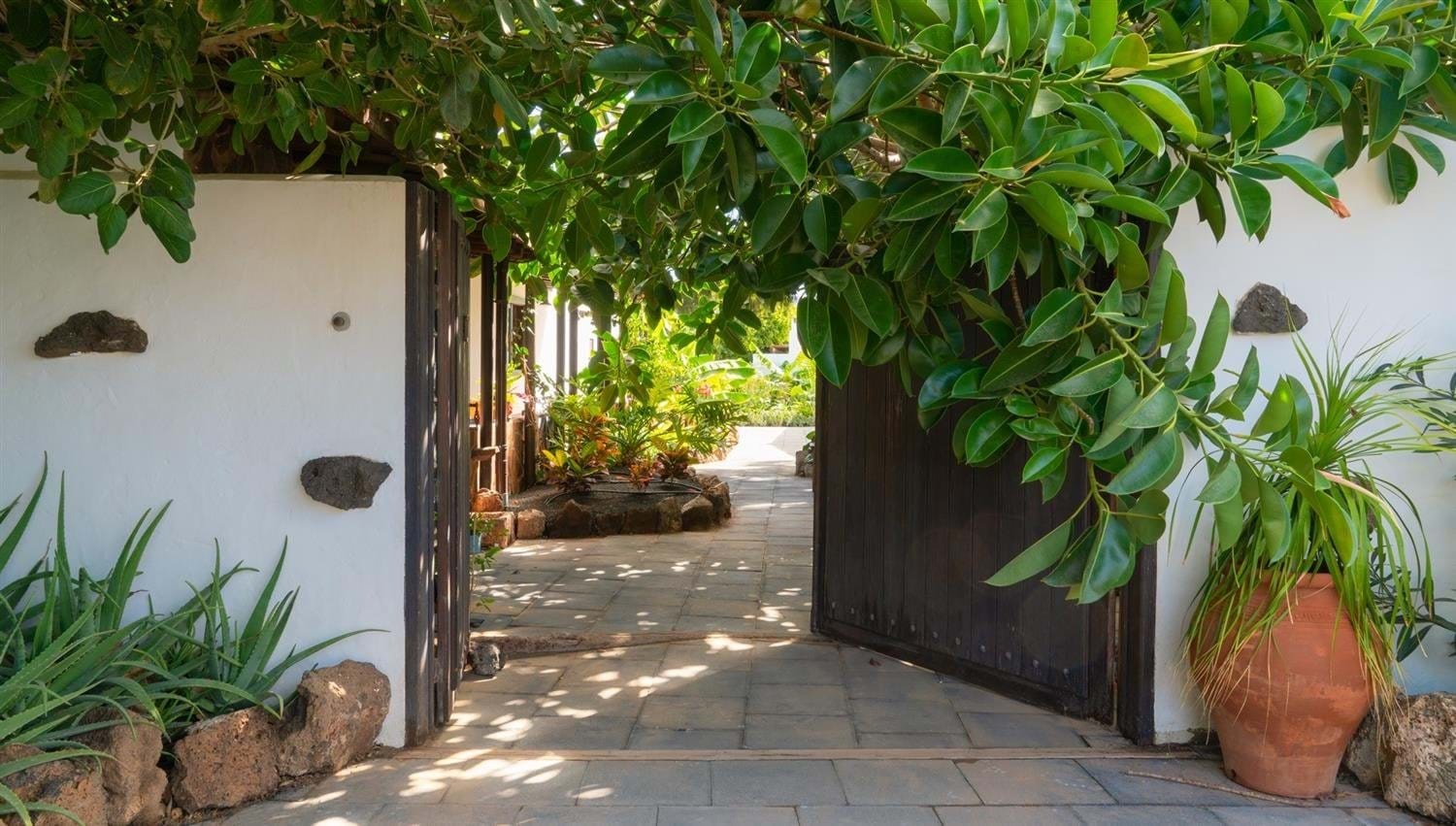WHERE IS LANZAROTE? - And Why Is Lanzarote Called Lanzarote?

So Where Is Lanzarote Exactly?
Lanzarote is one of the seven Canary Islands (eight if you include the tiny island of La Graciosa) which are owned by Spain but which are located in the Atlantic Ocean around 60 miles off the coast of North West Africa.
It takes around four hours to fly from the UK to Lanzarote (this can occasionally be quicker with favourable wind speed) and the Canaries are on Greenwich Mean Time, so there is now need to adjust your watch on arrival.
Run your finger down the coastline of Morocco and you’ll find the Canaries enjoy a more southerly location than well-known winter sunspots such as Marrakech, Casablanca and Agadir. The Canaries are also located quite close to the Western Sahara – which helps to explain the dry, arid, desert like climate on the more eastern Canary Islands such as Lanzarote and Fuerteventura.
Despite the fact that they are nowhere near Europe really, the Canary Islands are still part of the European Union as a result of being owned by Spain - this is in fact as far south as you can get and still be technically within the EU. And the islands sit on the same line of latitude (37 degrees) as parts of Florida and Mexico, placing them in a semi tropical zone.
The Spanish Conquest - 1402
Lanzarote has been part of Spain since the 1400’s. The Spanish – or the Crown of Castille as was the case at the time - first started a century long process of conquest in the Canary Islands in 1402, using a mixture of Italian and Norman mercenaries.
Spanish monarchies were in an expansionsist mode in general at this time as they sought to role back the Moors and reconquer Southern Spain (El Andalus). And the Canaries provided an important strategical outpost, whilst navigational developments such as cartography and the invention of the compass also laid groundwork.
Lanzarote was the first island in the Canaries to be conquered in 1402 – with the native Guanche inhabitants (thought to be descended from Africa berbers) offering much in the way of resistance.
The forces of the Castillian crown then flowed across the rest of the archipelago during the 1400’s – culminating in the conquest of Tenerife in 1496.
The Canary Islands became a vital strategic base for Spain, providing a staging point between Europe and the New World. Spanish galleons would set sail for South America laden with African slaves before returning via the Canaries with gold, silver and new plants and foodstuffs.
Why Are They Called The Canary Islands?
Whilst you do get wild canaries in the archipelago the name Canary Islands is in fact derived from the latin Canariae Insularis – which translates as Islands of the Dogs (not to be confused with the slightly less tropical destination of the Isles of Dogs in East London!).
The actual etymology is now shrouded in the mists of time, but some sources suggest that the name is derived from a pre-Spanish conquest expedition made by the King of Mauritania which sighted loads of large dogs.
Whilst others postulate the implausible, if not slightly barking theory, of invaders mistaking a colony of monk seals for dogs!
Why Is Lanzarote Called Lanzarote?
So why is Lanzarote called Lanzarote? There are a few theories, some of which are more plausible than others.
The most widely accepted explanation is based on the visit of a Genovese sailor in the early 1300’s called Lancelotto Malocello. An Italian cartographer then assigned the name Insula de Lanzarotus Marocelus to the newly discovered island on the maps he was producing.
Another popular explanation revolves around the Norman Conquistador Juan de Bethencourt who is said to have broken his spear in two – Lanza Rota (broken spear) to celebrate the subjugation of the island.
Last but not least some sources suggest the name derives from the French expression l’ance leau – which means throw to the water. Which was apparently the common cry given by French sailors when sighting land.
IMAGE COURTESY ANTONIA PRADA, UNSPLASH

